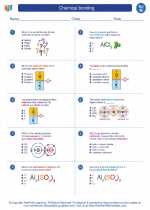Synthetic Fibers
Synthetic fibers are man-made textiles produced through chemical processes. They are created from polymers, which are long chains of molecules. These fibers have become popular due to their durability, strength, and resistance to wrinkles, mold, and mildew. Some common synthetic fibers include polyester, nylon, acrylic, and spandex.
Types of Synthetic Fibers
There are several types of synthetic fibers, each with unique properties and uses:
- Polyester: Known for its wrinkle resistance and durability, polyester is commonly used in clothing, upholstery, and bedding.
- Nylon: Nylon is strong, elastic, and resistant to abrasion, making it suitable for use in hosiery, swimwear, and parachutes.
- Acrylic: Acrylic fibers are lightweight, soft, and warm, often used in sweaters, blankets, and outdoor furniture.
- Spandex: Also known as elastane, spandex is highly elastic and is commonly blended with other fibers to provide stretch in clothing such as activewear and swimwear.
Advantages of Synthetic Fibers
Synthetic fibers offer several advantages, including:
- Resistance to wrinkles and shrinking
- Durability and strength
- Quick drying properties
- Ability to retain shape and color
- Cost-effectiveness
Disadvantages of Synthetic Fibers
Despite their benefits, synthetic fibers also have some drawbacks, such as:
- Potential environmental impact during production and disposal
- Lack of breathability compared to natural fibers
- Static accumulation
- Potential flammability
Study Guide
To understand synthetic fibers better, consider the following study guide:
- What are synthetic fibers made of?
- List and describe at least three common types of synthetic fibers.
- What are the advantages of synthetic fibers over natural fibers?
- Discuss the potential environmental impact of synthetic fiber production.
- Compare and contrast the properties of synthetic fibers with natural fibers.
Understanding the properties and uses of synthetic fibers is essential for anyone interested in textile production, fashion design, or materials science.
.◂Science Worksheets and Study Guides Eighth Grade. Chemical bonding

 Worksheet/Answer key
Worksheet/Answer key
 Worksheet/Answer key
Worksheet/Answer key
 Worksheet/Answer key
Worksheet/Answer key
 Vocabulary/Answer key
Vocabulary/Answer key
